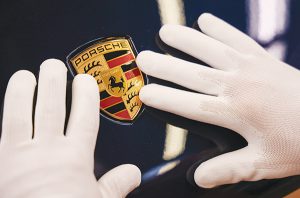When Porsche tried in 2008 to take over (much larger) Volkswagen AG using opaque financial derivatives, analysts pejoratively dubbed it a “hedge fund†that also makes sports cars. The bid was unsuccessful.
Now Porsche is part of Volkswagen, and the parent could almost be described as a “credit giant†with some car brands attached. This structure, though, is doing wonders for the German manufacturer’s bottom line.
Operating profits at VW’s auto finance unit doubled last year to 6 billion euros ($6.6 billion), according to figures published last week, outstripping even the bumper earnings of Porsche and Audi.
Rivals have also enjoyed windfalls from their financing units thanks to soaring used-car prices and exceptionally low loan-default rates. At BMW’s financial services division, the pre-tax return on equity doubled to almost 23% last year.
Such favorable market conditions won’t continue, yet 2022 still looks pretty good for car-loan providers. That’s fortunate because the business of actually manufacturing vehicles remains a headache.
In addition to raw-material cost inflation and semiconductor supply issues, automakers now have to worry about component shortages stemming from the war in Ukraine, as well as the rapid spread of omicron in China and Europe.
These headwinds underscore the benefit of carmakers having finance units that can make decent money regardless, and whose dividends can be repurposed by the parent for electric-vehicle and software investments.
Customer and dealer financing typically account for between one-fifth and one-third of auto-group earnings, but at some underperforming carmakers the figure is currently much higher. At Renault SA, for example, car finance contributed more than 70% of yearly operating earnings. No wonder Stellantis NV, owner of the Jeep and Ram brands, moved to create its own U.S finance unit last year.
One reason why financing has become so profitable stems directly from the cost and limited availability
of new vehicles. Used-car prices have increased around 40% in the US in just the past year. In some cases, pre-owned vehicles cost more than the equivalent new models, because the wait is shorter.
The upshot is leased vehicles are worth far more at the end of the contract than the lender assumed when the customer signed on.
—Bloomberg
 The Gulf Time Newspaper One of the finest business newspapers in the UAE brought to you by our professional writers and editors.
The Gulf Time Newspaper One of the finest business newspapers in the UAE brought to you by our professional writers and editors.
